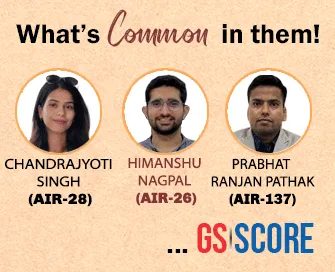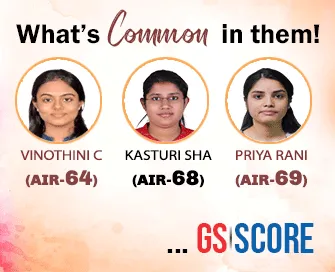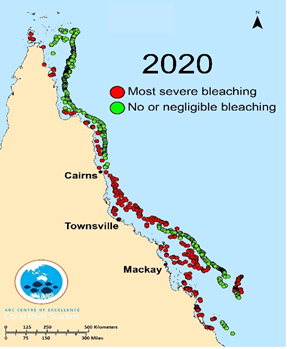

8th August 2025 (12 Topics)
Mains Issues
Context:
The Prime Minister addressed farmer welfare concerns amid FTA talks with the U.S., during the inauguration of the M.S. Swaminathan Centenary International Conference.
Definition and Scope of FTAs
- FTAs are bilateral or multilateral arrangements between countries to reduce or eliminate tariffs and non-tariff barriers on substantial trade between them.
- These agreements cover:
- Trade in goods: Agricultural, industrial, and consumer products
- Trade in services: Banking, education, construction, IT, etc.
- Other sectors: Intellectual property rights (IPRs), investment protection, e-commerce, government procurement, etc.
Early Harvest Scheme (EHS)
- An EHS is a precursor to a full FTA, where countries agree to reduce tariffs on a limited list of items while negotiations for a full-fledged FTA continue.
- It acts as a confidence-building measure between the trading partners.
FTAs and WTO: Exception to MFN Principle
- The Most Favoured Nation (MFN) principle under WTO mandates non-discrimination in trade.
- FTAs are legal exceptions to the MFN rule under Article XXIV of GATT, Article V of GATS, allowing countries to give preferential treatment to FTA partners.
India’s Recent FTAs (as per SBI Report)
- India has signed 13 FTAs in the last five years, including:
- Mauritius (CECPA – 2021)
- UAE (CEPA – 2022)
- Australia (ECTA – 2022)
- India – UK (FTA)
- Negotiations are underway with the EU, Canada, and Gulf Cooperation Council (GCC).
Challenges Faced by India in FTAs
- Trade Imbalance
- Between 2017 and 2022:
- India’s exports to FTA partners grew by 31%
- Imports rose by 82%
- Resulted in widening trade deficits, especially with ASEAN, South Korea, and Japan.
- Between 2017 and 2022:
- Low FTA Utilisation
- India’s FTA utilisation rate is only ~25%, due to:
- Lack of awareness among MSMEs
- Complex documentation and Rules of Origin compliance
- In contrast, developed nationsutilise FTAs at 70–80%
- India’s FTA utilisation rate is only ~25%, due to:
- Non-Tariff Barriers (NTBs)
- NTBs include sanitary and phytosanitary restrictions, quality standards, quotas, etc.
- According to Global Trade Alert, over 26,000 new trade restrictions were imposed globally between 2020 and 2024.
- Unequal Competition
- Indian firms face competition from advanced FTA partners:
- g., South Korea and ASEAN outperform India in electronics, auto parts, and machinery.
- Indian MSMEs often lack the capacity to compete with large MNCs from partner countries.
- Indian firms face competition from advanced FTA partners:
- Complex Rules of Origin (RoO)
- Certification and RoO compliance is difficult, leading to underutilisation of FTA benefits.
- Often, third-country goods are routed via FTA partners exploiting relaxed RoO norms.


Mains Issues
Context:
The Indian economy has been labelled as being in a “Goldilocks situation” by the Ministry of Finance and several analysts, but deeper structural indicators challenge the sustainability of this assessment.
Understanding the 'Goldilocks' Economy Concept
- Definition:A Goldilocks economy refers to a state where economic growth is neither too hot (leading to inflation) nor too cold (leading to recession), characterized by moderate GDP growth, controlled inflation, and favourable monetary conditions.
- Government’s Claim:India was described as being in such a macroeconomic phase due to GDP growth of 7.6% in FY24, declining inflation, and peaking interest rates.
Inflation Dynamics: Headline vs Food Inflation
- Disparity in CPI and CFPI:Despite CPI declining to 2.82% in May 2025, the Consumer Food Price Index (CFPI) remained consistently higher, reaching 10.87% in Oct 2024 and 5.66% in Aug 2024.
- Implication:For low-income households, which spend nearly 50% of their consumption on food, elevated food inflation significantly erodes real income and purchasing power.
- Core Inflation Focus:Economists argue for a policy focus on core inflation (excluding food and fuel) as a more stable and reliable metric for monetary policy decisions.
Real Wage Growth and Household Distress
- Wage-Income Disparity:Despite nominal wage increases, real wage growth has been minimal or negative in recent years. E.g., 2023 saw a nominal hike of 9.2% but real growth of only 2.5%.
- Impact:This "silent squeeze" forces households to reduce discretionary spending, incur debt, or compromise on essentials.
Income Inequality and the K-shaped Recovery
- Gini Coefficient Trends:India’s Gini coefficient declined from 0.489 (AY13) to 0.402 (AY23), but this data reflects only taxable income from the formal sector.
- K-shaped Recovery Post-COVID:Certain sectors (tech, high finance) have thrived while others (informal sector, low-skilled workers) remain stagnant, increasing intra-societal disparities.
- ILO Observations:India’s labour market continues to show stagnant real wages and inadequate job quality, which constrain consumption demand.
Fiscal Challenges and Debt Sustainability
- Deficit Trajectory:Fiscal deficit is projected to reduce from 6.4% (2022–23) to 4.4% (2025–26), and primary deficit from 3% to 0.8%.
- Public Debt Concerns:India’s general government debt-to-GDP stands at ~81%, exceeding the FRBM target of 60%.
- Macroeconomic Risks:High deficits and public debt crowd out private investment, strain fiscal space for social spending, and risk long-term sustainability.
Way Forward:
- Focus on Inclusive Growth:
- Prioritise real wage growth and quality employment generation across sectors.
- Expand social safety nets and public investment in education and health.
- Inflation Management with Precision:
- Enhance supply-side management of essential commodities.
- Adopt a dual strategy focusing both on headline and core inflation.
- Fiscal Prudence with Targeted Spending:
- Rationalise subsidies while increasing capital expenditure on productive sectors.
- Reorient tax policies to ensure progressivity and reduce burden on the poor.
- Labour Market Reforms:
- Enhance formalisation of the workforce.
- Strengthen skilling and wage standards, particularly in the informal sector.
- Data Transparency and Broader Metrics:
- Incorporate household-level metrics into economic assessment.
- Develop real-time indicators on employment, savings, and consumption.


Mains Issues
Context:
The 2024 Annual Groundwater Quality Report by the Central Ground Water Board (CGWB) reveals alarming levels of groundwater contamination across India, posing severe public health and environmental risks.
Significance of Ground Water in India:
- Dependence: Over 85% of rural drinking water and 65% of irrigation needs are met through groundwater.
- Vulnerability: Despite the monsoonal system and vast river network, India is increasingly dependent on groundwater due to erratic rainfall, limited surface water storage, and agricultural demands.
Nature and Extent of Ground Water Pollution:
- Nitrate Contamination
- Cause: Excessive use of nitrogen-based fertilizers, leaching from septic systems.
- Impact: Blue baby syndrome (methemoglobinemia), especially in Punjab, Haryana, and Karnataka.
- Data: 56% of districts exceed safe nitrate levels; 28% rise in hospital admissions from acute toxicity in five years.
- Fluoride Contamination
- Cause: Natural geogenic sources, aggravated by over-extraction.
- Impact: Dental and skeletal fluorosis, especially in Rajasthan, Andhra Pradesh, and Telangana.
- Data: 230 districts affected; 66 million people suffer from fluorosis; levels in Shivpuri (MP) reach 2.92 mg/L.
- Arsenic Contamination
- Cause: Geogenic origin, intensified by unregulated groundwater extraction.
- Impact: Cancer, neurological disorders, respiratory issues.
- Data: Ballia (UP) records 200 µg/L (20x WHO limit); Bagpat (UP) reports 40 mg/L (4000x WHO limit).
- Uranium Contamination
- Cause: Phosphate fertilizers, excessive withdrawal.
- Impact: Nephrotoxicity, organ damage.
- Data: Detected in Punjab, Andhra Pradesh, Rajasthan; 66% of samples hazardous to children.
- Heavy Metals and Industrial Waste
- Cause: Unchecked industrial discharge.
- Impact: Developmental delays, anaemia, immune damage.
- Example: Lead exposure in Kanpur (UP) and Vapi (Gujarat).
- Pathogen Contamination (Sewage and Septic Leakages)
- Impact: Outbreaks of cholera, hepatitis A and E, dysentery.
- Example: Over 500 affected in Paikarapur, Bhubaneswar.
Structural and Policy failures:
- Institutional Fragmentation
- CGWB, CPCB, SPCBs, and Ministry of Jal Shakti operate in silos without coordination.
- Weak Legal Framework
- The Water (Prevention and Control of Pollution) Act, 1974 inadequately covers groundwater.
- CGWB lacks statutory powers; enforcement is poor.
- Poor Monitoring and Transparency
- Lack of real-time, publicly available data.
- No early warning systems or integration with health surveillance.
- Over-extraction
- Results in aquifer depletion and higher concentration of geogenic pollutants.
Case Studies (Groundwater Death Zones)
- Budhpur, Baghpat (UP): 13 deaths due to industrial discharge contaminating borewells.
- Jalaun (UP): Petroleum-like fluid detected from hand pumps.
- Ballia (UP): 10,000+ arsenic-linked disease cases.
- Jhabua (MP): 40% tribal children affected by fluoride.
Health and Social Impacts:
- Chronic illness, disability, stunted growth in children.
- Economic burdens on families due to long-term health care.
- Disproportionate impact on rural and tribal populations.
Way Forward:
- Policy and Legal Reforms
- Enact a comprehensive National Groundwater Pollution Control Framework.
- Empower CGWB with statutory authority.
- Scientific Monitoring
- Develop real-time water quality monitoring systems.
- Establish a National Water Quality Surveillance Grid.
- Technological Interventions
- Promote community-based de-fluoridation, arsenic removal filters.
- GIS mapping and remote sensing for contamination tracking.
- Health and Social Interventions
- Link groundwater surveillance with public health programs.
- Promote nutrition-based mitigation (e.g., calcium-rich diets).
- Institutional Coordination and Accountability
- Set up an inter-agency task force to coordinate action across CGWB, CPCB, SPCBs.
- Ensure industries comply with zero-liquid discharge (ZLD) norms.
- Community Participation and Awareness
- Decentralised water governance involving panchayats, SHGs.
- Promote water literacy campaigns.


Prelims Articles
Context:
The Ministry of Culture has highlighted key schemes under the Kala Sanskriti Vikas Yojana (KSVY) for promoting India’s tangible and intangible cultural heritage.
Kala Sanskriti Vikas Yojana
- Kala Sanskriti Vikas Yojana (KSVY) is an umbrella Central Sector Scheme implemented by the Ministry of Culture, Government of India, to provide financial support for activities aimed at promotion and preservation of India’s art and culture.
- KSVY integrates several sub-schemes under one platform, streamlining support to artists, institutions, and cultural bodies.
- Major schemes under KSVY include:
- Scheme of Financial Assistance for Promotion of Art and Culture, which provides grants for organizing cultural programs, festivals, exhibitions, and seminars.
- Scheme of Financial Assistance for Creation of Cultural Infrastructure, which offers funding for constructing or renovating cultural spaces such as auditoriums, cultural centers, and museums.
- Scheme for Safeguarding the Intangible Cultural Heritage, which specifically focuses on promoting the 13 Indian elements recognized by UNESCO as Intangible Cultural Heritage (ICH). These include traditions like Kutiyattam, Ramman, Chhau dance, Kalbelia folk songs and dances, Mudiyettu, Buddhist chanting of Ladakh, Sankirtana of Manipur, and others.
- These schemes help preserve both tangible and intangible cultural assets by supporting artists, craftsmen, and cultural organizations across India.
- The Central Sector classification of KSVY implies it is 100% funded by the Union Government, ensuring consistent resources for cultural promotion.
- Promotion of intangible cultural heritage is vital to safeguard India’s diverse cultural expressions, many of which face threats from modernization, urbanization, and generational shifts.
- The schemes under KSVY are critical for India’s obligations under the UNESCO 2003 Convention for the Safeguarding of the Intangible Cultural Heritage, to which India is a signatory.


Prelims Articles
Context:
The Ministry of Jal Shakti has recently publicized the Bhu-Neer portal, launched by Central Ground Water Authority (CGWA), to streamline the process of obtaining No Objection Certificates (NOCs) for groundwater abstraction.
About Bhu-Neer Portal:
- Launched in 2024 by Central Ground Water Authority (CGWA) under the Ministry of Jal Shakti.
- Purpose: To facilitate online applications for No Objection Certificates (NOC) related to groundwater abstraction for industries, infrastructure, and mining projects.
- Applicable in 19 States/UTs where CGWA regulates groundwater extraction.
Key Features of the Portal:
- PAN-based Single ID System for user authentication.
- Eligibility check feature before applying.
- Online charges calculator, real-time SMS/email alerts, query module for user-official interaction.
- QR code-enabled NOC for secure and verifiable documentation.
Legal Framework & Guidelines:
- Functions in accordance with Ground Water Extraction Guidelines dated 24.09.2020.
- Ensures compliance with water conservation measures such as rainwater harvesting and sewage treatment plants.
Significance:
- Enhances transparency, efficiency, and sustainability in groundwater resource management.
- Aids in curbing indiscriminate extraction and enforces conservation norms.
- Supports India’s groundwater sustainability goals and digital governance initiatives.


Prelims Articles
Context:
The Government has launched the Notary Portal to digitize processes under the Notaries Act, 1952 and Notaries Rules, 1956, and as of 31st July 2025, over 34,900 digitally signed Certificates of Practice have been issued through the portal.
Notary Portal:
- The Notary Portal is an initiative by the Government of India to provide a faceless, paperless, and efficient digital interface for notarial services governed by the Notaries Act, 1952 and Notaries Rules, 1956.
- The portal enables:
- Submission of applications for appointment as Notaries.
- Verification of eligibility for appointment.
- Issuance and renewal of digitally signed Certificates of Practice.
- Request for change of area of practice.
- Filing of annual returns by Notaries.
- It reflects the broader agenda of Digital India and e-Governance in legal services, aligning with efforts to enhance transparency and reduce bureaucratic delays.
- As of 31 July 2025, over 34,900 Notaries across various States and UTs have received digitally signed Certificates of Practice through this online platform.
- The move is part of India’s continuing legal reforms aimed at ease of doing business, improved citizen services, and modernization of the justice delivery ecosystem.


Prelims Articles
Context:
The VigyanDhara scheme, operational since January 16, 2025, was highlighted for its support to 36 Technology Business Incubators (TBIs) and 72 Startups across India.
VigyanDhara
- VigyanDhara is a central sector scheme launched on 16 January 2025 by the Department of Science and Technology (DST).
- It is a result of the merger of three umbrella schemes:
- Science and Technology Institutional and Human Capacity Building
- Research and Development
- Innovation, Technology Development and Deployment
- The scheme aims to streamline support mechanisms and promote holistic development in:
- R&D Infrastructure
- Scientific manpower development
- Technology development and deployment
- Start-up ecosystem via incubators
- Under VigyanDhara, support is extended through NIDHI-SEED, a program for funding early-stage Startups via Technology Business Incubators (TBIs).
- The scheme contributes to India’s innovation ecosystem by strengthening incubation and startup financing, especially in emerging technologies.


Prelims Articles
Context:
The Australian Institute of Marine Science reported that the Great Barrier Reef has suffered its largest annual coral loss in 39 years, mainly due to climate change-induced coral bleaching.
Background of the Great Barrier Reef (GBR):
- It is the world’s largest coral reef system, spanning approximately 344,000 sq. km off the northeast coast of Australia.
- It is a UNESCO World Heritage Site and a biodiversity hotspot.

Recent Report Highlights (2025):
- The 2024 coral cover was the highest recorded in 39 years, but the annual loss was also the highest ever.
- Coral bleaching caused by record ocean temperatures in 2023–2024 led to significant damage.
- Coral loss by region:
- Southern GBR: ~33% loss
- Northern GBR: ~25% loss
- Central GBR: ~14% loss
Cause of Bleaching:
- Coral bleaching occurs when corals expel zooxanthellae algae under prolonged thermal stress, turning them white and weakening them.
- The current bleaching event is the largest ever, affecting 84% of global reef areas.
- Initiated in Jan 2023 and declared a global crisis in April 2024.
Climate Thresholds (IPCC, 2018):
- Coral reefs are extremely sensitive to warming beyond 2–1.5°C above pre-industrial levels.
- At 2°C warming, coral-dominated ecosystems are projected to become nearly non-existent.
- The current warming is ~1.3°C since pre-industrial times.
Ecological and Global Impact:
- Coral reefs support 25% of all marine species.
- Serve as natural barriers against coastal erosion and storms.
- Crucial for fisheries, biodiversity, and tourism economies


Prelims Articles
Context:
India continues to face underdiagnosis and inadequate treatment of haemophilia, with only 20% of estimated cases identified, highlighting the need for wider adoption of prophylaxis-based care.
Haemophilia:
- Haemophilia is an inherited, rare bleeding disorder where blood fails to clot due to deficiency of clotting factors.
- Most common form is Haemophilia A, caused by Factor VIII deficiency.
Clinical Impact:
- Even minor injuries can result in excessive external or internal bleeding.
- Recurrent spontaneous joint/muscle bleeds may cause chronic disability.
- Cerebral bleeds without trauma can be life-threatening.
Prevalence in India:
- Estimated cases: 1 to 1.5 lakh based on 1 in 10,000 prevalence.
- Only ~29,000 diagnosed—20% of expected—due to lack of awareness and access to diagnostics.
Prophylaxis vs. On-Demand Therapy:
- On-demand therapy treats bleeding after it occurs, often after damage.
- Prophylactic therapy involves regular replacement of clotting factors to prevent bleeding episodes.
- Newer options include subcutaneous injections using non-factor products.
Advantages of Prophylaxis:
- Prevents joint damage and disability.
- Improves quality of life, reduces school/work absenteeism.
- Reduces healthcare burden and long-term treatment costs.
- Regarded as international gold standard in haemophilia treatment.
- ~90% of patients in developed nations are on prophylaxis, achieving near-normal life expectancy.


Editorials
Context:
The Election Commission’s Special Intensive Revision (SIR) of Bihar’s electoral rolls has led to the exclusion of many migrant workers, raising concerns over their voting rights and the interpretation of the term ‘ordinarily resident’.
Legal Framework and Interpretation
- Electoral Roll and RP Act Provisions: Under Section 19 of the Representation of the People Act, 1950, a person must be an “ordinarily resident” in a constituency to be included in its electoral roll. This ensures real and legal connections to the area to promote representative accountability.
- Definition of 'Ordinarily Resident': Section 20 clarifies that mere ownership of property is not sufficient. Temporary absence does not affect residential status. Court interpretations (e.g., Gauhati High Court in ECI v. Manmohan Singh, 1999) require habitual, permanent, and intention-based residence.
- Non-Resident Indians (NRIs): Section 20A, added in 2010, allows NRIs to vote in the constituency mentioned in their passport, acknowledging long-term absence while preserving voting rights.
Electoral Challenges for Migrant Labour
- High Migrant Population:According to PLFS 2020–21, nearly 11% of India's population migrates for employment, which includes around 15 crore potential voters, many of whom are seasonal or circular migrants.
- Disenfranchisement via Electoral Revision: During SIR, the ECI categorized those absent or unresponsive as “permanently shifted/not found” and removed them from rolls. This disproportionately affects mobile workers who return periodically to their native places.
- Legal Status vs. Ground Realities:While migrants are eligible to shift their registration, they often lack acceptable documentation or face objections in host States. Legal provisions alone do not address administrative and political resistance.
Political Concerns and the Way Forward
- Political Opposition in Host States: Regional parties in in-migration States argue against migrant inclusion, citing their lack of rootedness and understanding of local political contexts, potentially creating voter suppression through regionalism.
- Technological and Logistical Interventions: ECI’s Remote Electronic Voting Machine (RVM) pilot for 72 constituencies faced delays due to political and administrative pushback. Better technology and inclusive systems are still needed.
- Legislative and Administrative Reforms: Parliament may consider amending the RP Act to affirm migrant voting rights. Interim steps such as paid leave, special trains, and polling day holidays could enhance migrant voter participation.
Practice Question:
"Discuss the legal and administrative challenges faced by migrant workers in exercising their voting rights in India. Suggest institutional reforms to enhance their electoral participation." (250 words)


Editorials
Context:
The International Court of Justice (ICJ) has delivered a landmark advisory opinion affirming that states have legal obligations under international law to act against climate change.
Clarifying State Responsibilities
- Advisory Opinion as Legal Clarification: Although non-binding, ICJ’s advisory opinion serves as an authoritative interpretation of international law and strengthens accountability by influencing state behaviour through legal and moral pressure.
- Binding Nature of Climate Obligations: The Court ruled that states must exercise due diligence and cooperate in fulfilling their Nationally Determined Contributions (NDCs) under the Paris Agreement, which must reflect their highest possible ambition.
- Global Scientific Consensus Upheld: The Court reinforced the 1.5°C temperature limit as the operative standard for climate mitigation, using the best available scientific evidence and Conference of Parties (COP) decisions to interpret treaty obligations.
Principles of Climate Justice and Differentiation
- Recognition of CBDR-RC Principle: The ICJ reiterated the principle of Common But Differentiated Responsibilities and Respective Capabilities (CBDR-RC), allowing differentiated obligations based on historical emissions, development level, and national capacity.
- Legal Duty of Climate Finance: Developed nations were held to a legally binding obligation to provide financial support and technology transfer to developing countries for mitigation and adaptation, subject to good faith and due diligence.
- Rights-Based Climate Action: The Court linked climate change to human rights obligations, particularly for vulnerable populations, and emphasised that mitigation policies must align with the goal of achieving a just and inclusive green transition.
Broader Legal and Strategic Implications
- Rejection of Self-Contained Regime Argument: The ICJ dismissed the argument that climate treaties are self-contained and clarified that obligations also arise from customary international law, environmental treaties, and the Law of the Sea Convention.
- Attribution of Emissions Responsibility: The Court affirmed that individual state responsibility is valid, as scientific methodologies can accurately estimate each country's contribution to climate change through historical and current emissions data.
- Empowerment of the Global South: Small island nations initiated this process, and the opinion enhances their ability to demand climate justice, support strategic litigation, and push the Global North towards meeting climate finance commitments.
Practice Question:
"Critically examine the implications of the International Court of Justice’s advisory opinion on climate change for international climate governance and the principle of common but differentiated responsibilities." (250 words)

Editorials
Context:
The US has imposed steep tariffs on Indian exports, triggering concerns over trade tensions and economic implications.
Immediate Challenges and Risks
- Tariffs as Economic Weapons: The US decision to raise tariffs on Indian goods like steel and aluminum exemplifies the use of trade measures as tools of geopolitical coercion.
- Potential Economic Disruption: Heightened tariffs on politically sensitive US imports, including almonds and motorcycles, could disrupt key revenue streams for American exporters and escalate tensions.
- Indian Export Vulnerabilities: India’s reliance on specific export items like pharmaceuticals and textiles makes it susceptible to tariff-induced shocks that could harm competitiveness.
Strategic Diplomatic Options
- Mature Statecraft Over Hyper-Nationalism: Rather than panic or aggressive retaliation, India must exercise diplomatic maturity by avoiding nationalistic fervor that could worsen trade relations.
- Leveraging Alternative Markets: India can diversify export destinations, expand into Gulf countries, Africa, and ASEAN markets, and deepen economic ties with the EU and UK to reduce dependence on the US.
- Capitalizing on Global Trade Dynamics: India should exploit the opportunity created by US-China tensions to attract investments shifting out of China, thereby strengthening domestic manufacturing.
Long-Term Economic Reforms
- Reducing Structural Weaknesses: Tariff challenges highlight the need for India to improve ease of doing business, address supply chain inefficiencies, and build globally competitive industries.
- Enhancing Export Competitiveness: Investing in productivity, ensuring policy consistency, and lowering domestic tariffs could make Indian products more competitive in global markets.
- Building Resilient Trade Architecture: Strengthening regional trade agreements and proactively participating in multilateral negotiations would safeguard India from future trade shocks.
Practice Question:
"Critically analyse the implications of US trade protectionism for India’s economic security. How should India balance immediate trade disputes with long-term strategies to diversify and strengthen its export base?" (250 words)




